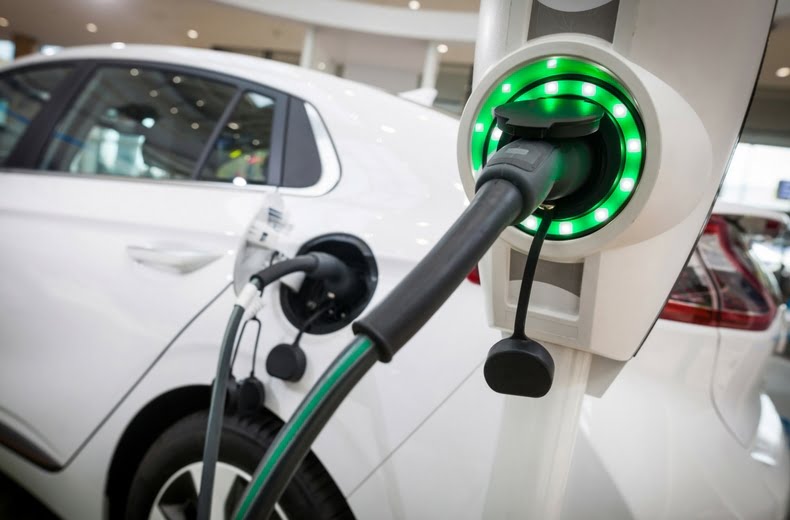When most people learn about electric vehicles (EVs), they often assume they are a modern invention. However, the electric car actually predates the internal combustion engine (ICE) vehicles commonly seen on our roads today, with Robert Anderson inventing the electric car in 1832 and Carl Benz creating the first internal combustion engine vehicle in 1886.
This article aims to explain why the internal combustion engine became the dominant form of land transport and why we are now at the beginning of a significant shift towards electric vehicles.
Understanding the basics of transportation energy
The primary purpose of transportation is to move goods or people from point A to point B at a reasonable cost and comfort. Fundamentally, this is an energy problem: converting potential energy into kinetic energy to provide traction for a vehicle. Thus, we need two essential components:
- A source of potential energy and a way to store that energy in the vehicle (ENERGY STORAGE).
- A device to convert that potential energy into kinetic energy (A MOTOR).
Motors: the heart of vehicle traction
The role of a motor is to convert potential energy into kinetic energy for traction. Motors are designed to convert specific types of potential energy into kinetic energy, resulting in motion. The main types of motors used today are:
- Heat engines: Including external combustion engines (steam engines), internal combustion engines (petrol and diesel), jet engines, and rocket engines.
- Electric motors: Which convert electric current into motion, divided into Direct Current (DC) and Alternating Current (AC) motors.
Heat engines
Heat engines convert the chemical energy of a fuel into motion. In the early days, steam engines used coal as fuel. Today, internal combustion engines typically use fossil fuels such as refined petroleum products or natural gas. The heat generated from combustion is then converted into rotary motion to provide traction.
For land transport, the focus is on internal combustion engines (ICEs), which are commonly used in cars and trucks.
Electric motors
Electric motors operate through magnetic fields. When electric current and a magnetic field are aligned at 90 degrees to each other, motion is produced at another 90 degrees to both. This is the basic principle behind electric motors, which are divided into DC motors and AC motors based on the type of input current.
Electric motors can also function as generators, converting motion back into electric current, a principle used in regenerative braking systems in EVs.
Comparing internal combustion engines and electric motors
A side-by-side comparison of an internal combustion engine (ICE) and an electric motor of similar power reveals several advantages of electric motors:
- Electric motors are smaller, lighter, less complex, and more efficient.
- ICEs have numerous moving parts and require regular maintenance, while electric motors are simpler and require minimal maintenance.
- The complexity of ICEs poses a barrier to entry for new manufacturers, whereas electric motors are more accessible.
Economic and safety considerations
ICEs are bulkier and require extensive supporting systems, increasing the complexity and points of potential failure. This complexity has economic implications, creating numerous jobs and value in the automotive industry but also creating dependency on specialized skills and materials.
Electric motors, due to their simplicity and efficiency, present fewer safety risks. They can be placed anywhere in the vehicle, unlike ICEs, which are typically located in the front or rear, posing a hazard during collisions.
The shift to electric vehicles
Despite their early advantages, electric vehicles were initially limited by their range, which was measured in tens of kilometers compared to hundreds for petrol/diesel vehicles. This limitation stemmed from the energy source and storage methods.
The electric self-starter, invented by Charles Franklin Kettering, significantly improved the usability of ICE vehicles, but the inherent advantages of electric motors are leading to a resurgence in EV adoption.
Conclusion
The transition from internal combustion engines to electric vehicles is driven by the superior efficiency, simplicity, and safety of electric motors. This change, while still in its early stages, is becoming increasingly inevitable as advancements in energy storage and motor technology continue to evolve.
In the next part of this series, we will delve deeper into the aspects of energy and energy storage for both ICE and electric vehicles. Stay tuned!
Gad Senyuiedzorm Ashiagbor is the founder and Executive Director of AfricaNEV. He is an E-mobility Enthusiast, Advocate and Consultant
Socials: Facebook & LinkedIN – Gad Senyuiedzorm Ashiagbor;
Twitter -@walencho; email –walencho@gmailcom
















